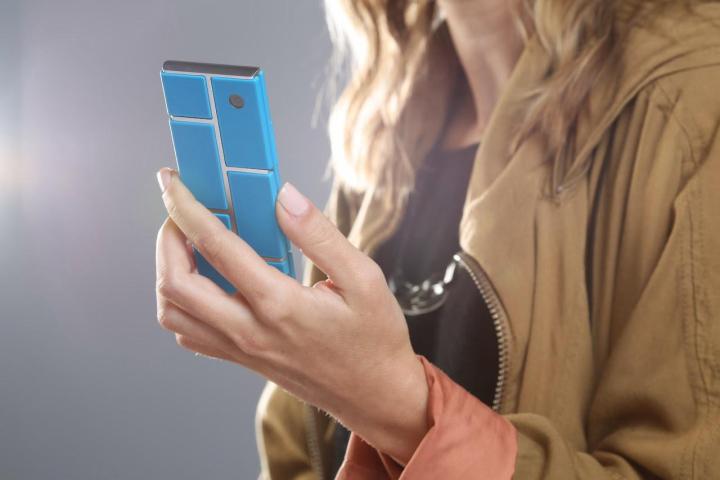
A much-improved third prototype
According to Google, work on Spiral 2, Ara’s second official prototype, took place since July of last year. However, the next iteration, Spiral 3, will one-up it in several different areas. For one, by way of Engadget, Eremenko said we can expect Spiral 3 to “match or exceed the functionality of a state-of-the-art smartphone today.” By that, he means the new prototype will have 20-30 third-party modules available for developers to play around with.
In addition, you should expect Spiral 3’s battery to last you through the end of the day. The latest prototype will also support high-end camera modules and 4G LTE connectivity, which is quite the step up from Spiral 2’s 3G connectivity.
The biggest change to Spiral 3 is one that you won’t see: The electro-permanent magnets that hold the modules in place are now sent to the endoskeleton. This move was made in order for companies to have more room to work with when it comes to putting in as much functionality into their modules as possible.
Speaking of modules, Eremenko revealed that, while you’ll be able to customize your own Ara device through the Ara Marketplace and Ara Configurator apps, custom designs won’t be made through 3D printing. According to Eremenko, such a process wouldn’t be as fast as Google would like it to be. In its place is what Google calls “dye sublimation,” a process that lets El Goog design polycarbonate shells with high-resolution imagery in a fraction of the time it takes for 3D printing to do the same.
Google hopes to move to the Spiral 3 design sometime during the second quarter of 2015.
Project Ara lanzará en Puerto Rico
If you didn’t realize it yet, the above heading is in Spanish. That’s because Eremenko revealed Project Ara will launch a pilot program in Puerto Rico through partnerships with carriers OpenMobile and Claro later this year.
About 20 to 30 Ara modules sprawling 10 different categories should be ready to go by the time the pilot program launches. As a way for Google to have people try out Ara before plunking down the cash for it, “food-truck” style stores will presumably go through main spots in Puerto Rico to allow people to test one out first.
As reported by the Verge, Google is launching this pilot program as a way to gauge what works with consumers and what doesn’t work, with the goal being to continually improve on the hardware. Moreover, Google wants to gauge how consumers will balance this new paradox of choice for something like the Ara.
“We have to carefully curate and manage the way that choice is presented so as not to overwhelm the consumer,” said Eremenko.


